Impact on Teachers and Students
Primarily Math teachers take three annual surveys in order for us to measure the impact of Primarily Math on teachers’ mathematical knowledge for teaching, attitudes toward mathematics, and beliefs about mathematics, teaching and students. We follow the research literature that identifies a specialized body of knowledge that teachers need to be effective mathematics teachers.
Teacher Knowledge of Mathematics Increases
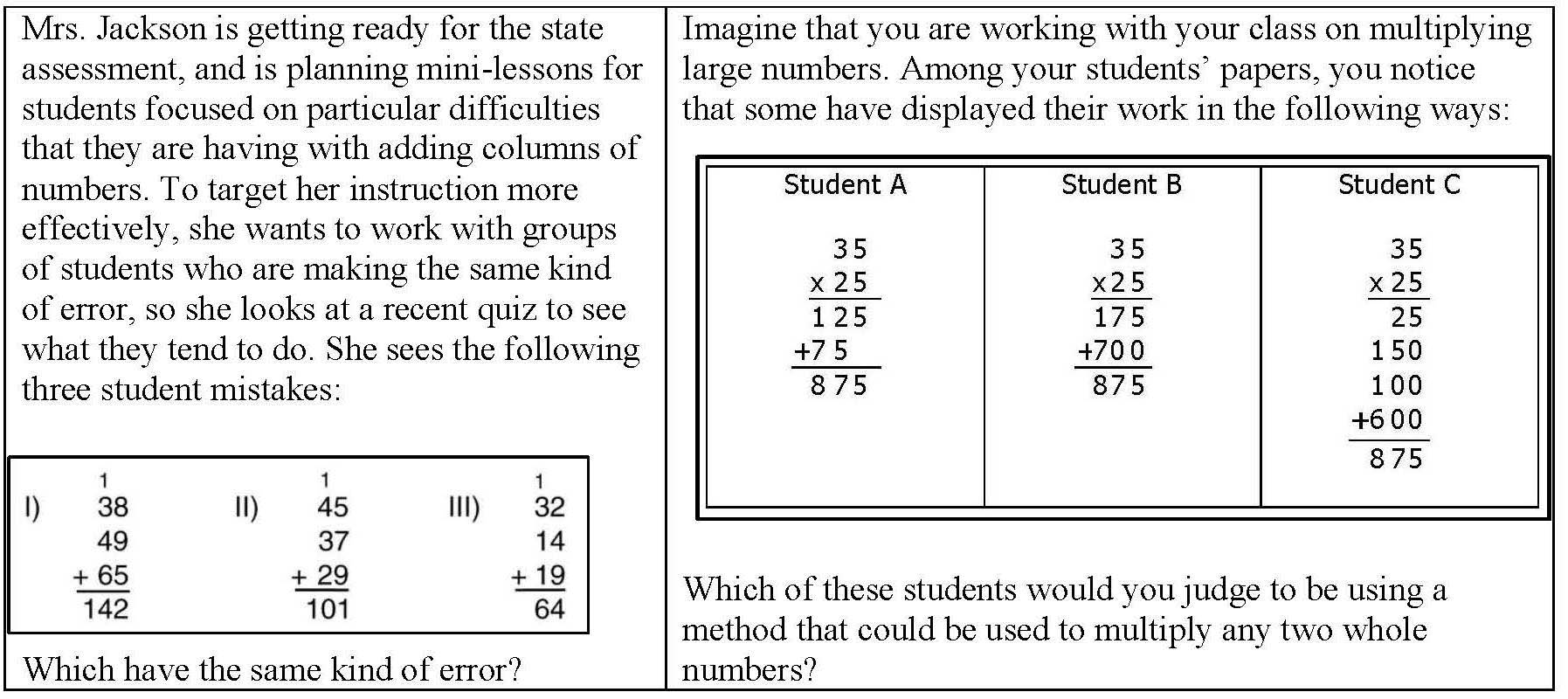
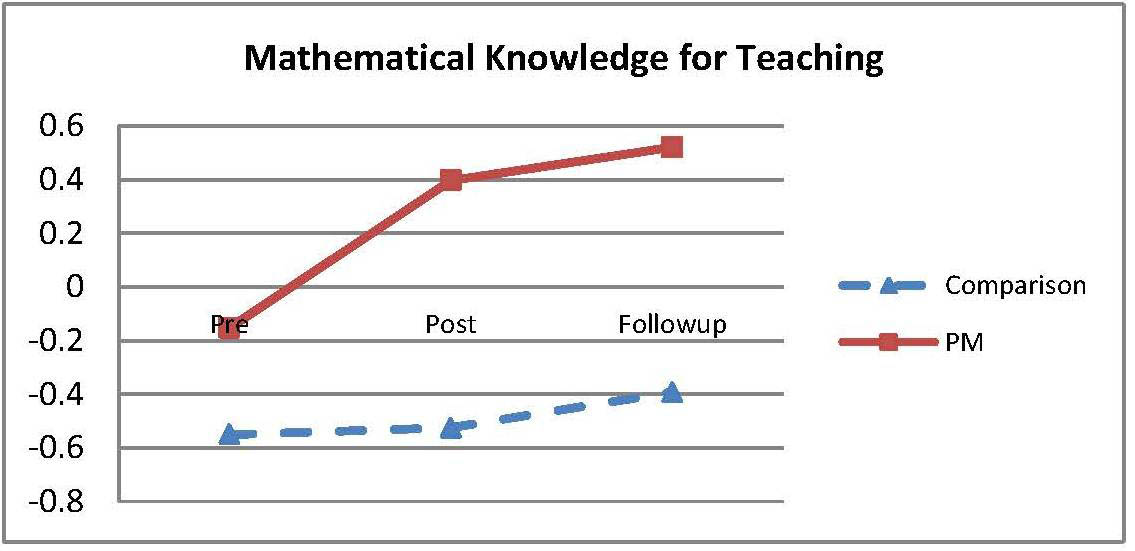
Mathematical knowledge for teaching includes anticipating student misconceptions and errors, planning examples, using manipulatives, connecting different representations, understanding how algorithms work, and connecting different mathematical concepts. In our courses, we focus on helping teachers improve their mathematical knowledge for teaching. A survey of Mathematical Knowledge for Teaching, developed at the University of Michigan for K-6 teachers, measures this type of knowledge. Two sample items are shown here.
The survey is designed for K-6 teachers. Thus, we expected the K-3 teachers, even the outstanding teachers we were recruiting, intially performed somewhat below the national norm group of K-6 (scaled score of 0). Indeed, both PM teachers before PM and the comparison group teachers do initially score below the national average for K-6 teachers. However, at the end of Primarily Math and in the years following, our K-3 teachers score well above the national average. Average growth of PM teachers’ MKT from beginning to end is .67 standard deviations (considered a very large gain); comparison group teachers remained statistically flat.
Improvements in Teacher Attitudes and Beliefs Related to Mathematics
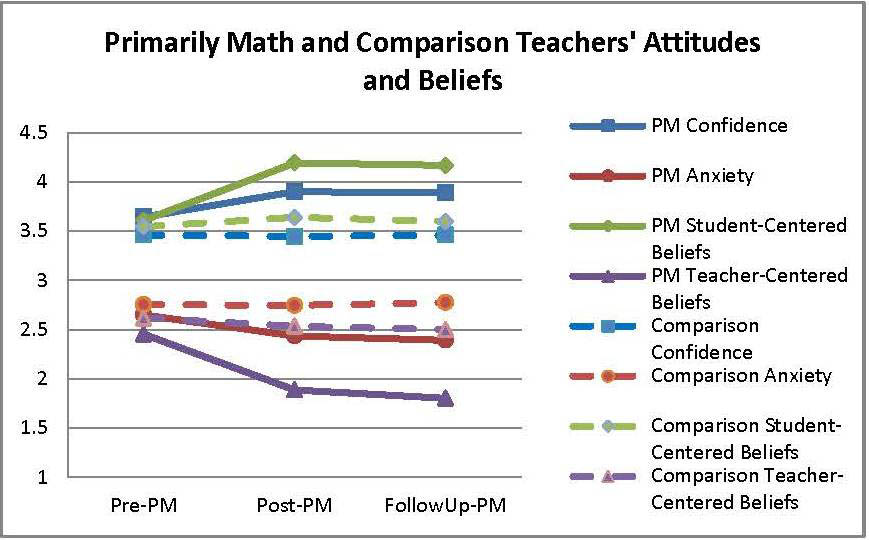
In addition to the measure of mathematical knowledge for teaching, teachers also take a Mathematics Attitude Inventory for Teachers, and a Survey of Teaching Practices which includes items about beliefs about mathematics, teaching, learning and students. Over time, PM teachers experienced more confidence and increased student-centered beliefs, along with less anxiety and decreased teacher-centered beliefs. During this time, the comparison group scores remained statistically flat. We know that, in particular, female teachers' mathematical anxiety is "contagious" for female students, so decreasing teacher mathematical anxiety is a very positive outcome.
Building a Community of K-3 Teachers
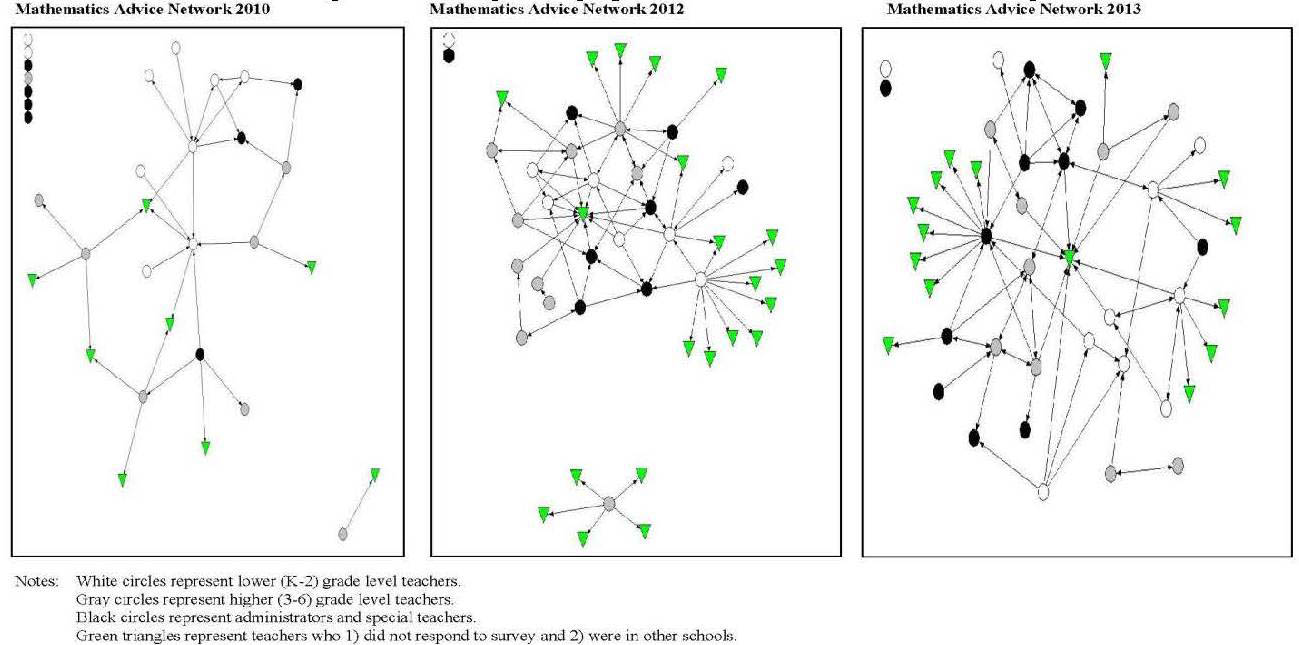
In our core partner districts, in collaboration with colleagues at Northwestern University, we have used a Teacher Network Survey in 2010, 2011 and 2013 to learn more about who teachers seek advice from regarding teaching mathematics, as well as those who sought their advice. Often, the presence of a Primarily Math teacher leads to changes in how often teachers talk about math with others and whether teachers view PM teachers as a resource for advice about mathematics teaching and learning. The graphics below demonstrate the changes in one school.
Student Achievement Increases
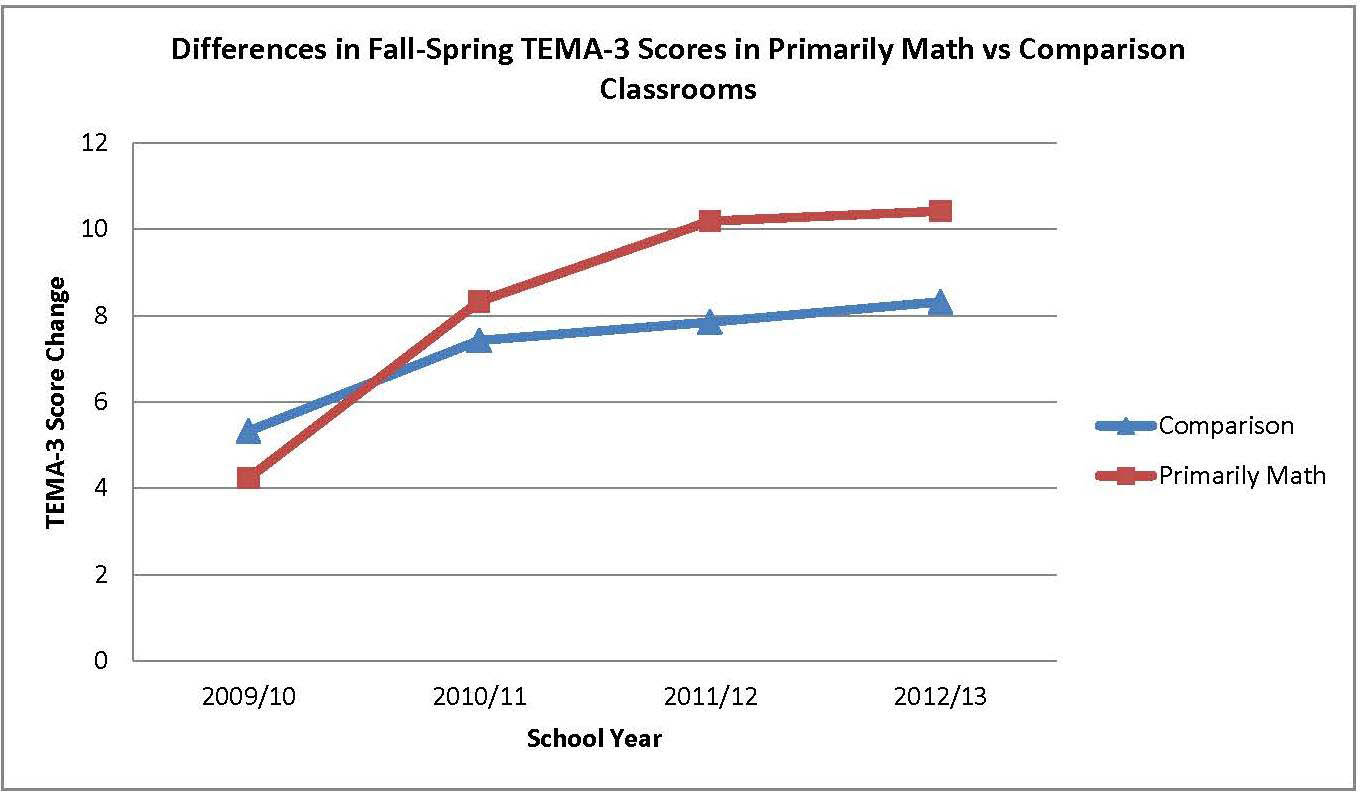
Since NeSA-M has only been administered to grades 3-8 and 11, we needed an alternative assessment for K-2 students. The TEMA-3 (Test of Early Mathematics Ability, 3rd Edition) is an individually-administered test for children up to age 9 that measures their number and operations procedural and conceptual understanding. We administered this to approximately 1500 students per year in Lincoln, Omaha, and Papillion-La Vista during NebraskaMATH. We expected student achievement gains would show up beginning in the years after a teacher has completed Primarily Math. Our data show that teacher increases in mathematical knowledge for teaching continue to show gains after teachers complete Primarily Math. In the first two years of the project, while the first two cohorts were completing the project, students in classes of Primarily Math teachers and non-Primarily Math teachers scored at statistically equivalent levels. In the project’s third and fourth years, students in classes of Primarily Math teachers had statistically significantly larger gains from fall to spring on the TEMA-3, compared to students in the comparison classrooms. Importantly, the largest gains were experienced by students who began the year with below-average levels of achievement; this helps to narrow achievement gaps.
